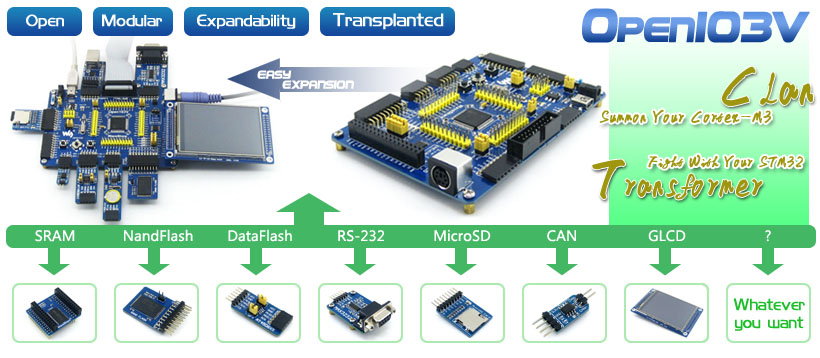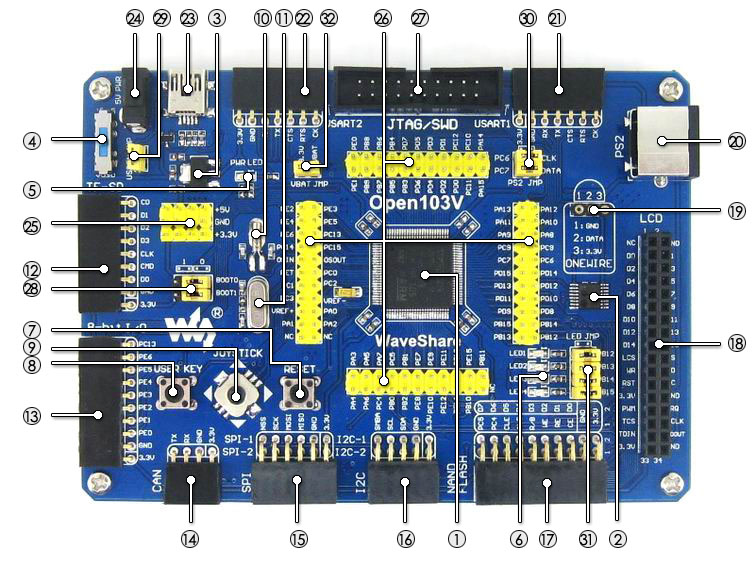Open103V Package B , STM32F1 Development Board SKU: Open103V Package B
 | 0 訂單數量
| 0 訂單數量單價
US $88.90 / PCS
發貨方式
 --->>>到達時間 5-7天
--->>>到達時間 5-7天 --->>>到達時間 15-27天
--->>>到達時間 15-27天 --->>>到達時間 5-7天
--->>>到達時間 5-7天數量
金額
US $88.90
主營全新原裝正品現貨,訂貨,註冊會員提交詢價可以了解到最新產品報價。^_^
 | 0 訂單數量
| 0 訂單數量 --->>>到達時間 5-7天
--->>>到達時間 5-7天 --->>>到達時間 15-27天
--->>>到達時間 15-27天 --->>>到達時間 5-7天
--->>>到達時間 5-7天| 型號 | Open103V Package B |
| 品牌 | Waveshare |
| 年份 | 16+ |
| 描述 | -, STM32F1 Development Board SKU: Open103V Package B |
 規格書 規格書 | 點擊查看 |

| $86.692+ |
| $85.193+ |
| $84.194+ |

Open103V is a STM32 development board that features a STM32F103VET6 device as the microcontroller. There are further expansions with various optional accessory boards for specific application. The modular and open design makes it the ideal for starting application development with STM32F family.

Note:
The Open103V supports programming via STM32 USART bootloader, a USB TO UART accessory board is also provided in the package.
The Open103V does NOT integrate any debugging function, a debugger is required.
The figure 1, and 2 show the header pinouts of JTAG/SWD interface









